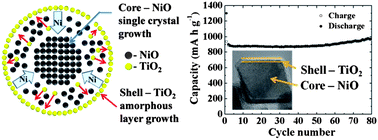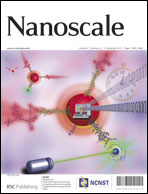One-pot rapid synthesis of core–shell structured NiO@TiO2 nanopowders and their excellent electrochemical properties as anode materials for lithium ion batteries†
Abstract
Core–shell structured NiO@TiO2 nanopowders for application as anode materials for lithium ion batteries are prepared by one-pot flame spray pyrolysis from aqueous spray solution containing Ni and Ti components. A new formation mechanism of the core–shell structured nanopowders in the flame spray pyrolysis is proposed. Composite nanopowders are first formed by surface growth and coagulation from NiO and TiO2 vapors. A small amount of TiO2 in composite powders disturbs the crystallization of TiO2. Therefore, the TiO2 component moves out to the surface of the powders forming an amorphous shell during the formation of single crystalline NiO. The initial discharge and charge capacities of the NiO@TiO2 nanopowders at a current density of 300 mA g−1 are 1302 and 937 mA h g−1, respectively. The discharge capacities of the pure NiO and NiO@TiO2 nanopowders after 80 cycles are 542 and 970 mA h g−1, respectively. The capacity retentions of the pure NiO and NiO@TiO2 nanopowders after 80 cycles measured after the first cycles are 75 and 108%, respectively.


 Please wait while we load your content...
Please wait while we load your content...